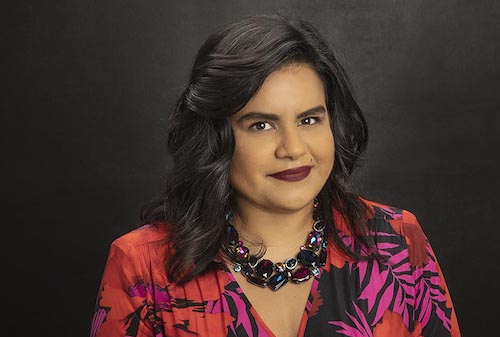Establishing Shot: How to Use Video as a PR Medium
By Brenda Duran
October 2021
To spread the word about their organizations during the past year and a half, many public-sector communicators have had to pivot their work to the virtual realm.
And many public-sector services that used to be offered in-person have been reimagined online, providing a silver lining to the past 18 months — the opportunity to modernize operations in step with technological advances, always a plus in the public sector.
For communicators, embracing new technology lets us discover tools we may not have used before, such as video.
According to HubSpot, video has become the most commonly used format in content marketing, overtaking blogs and infographics. Promotional videos and brand storytelling are the most common forms of video that marketers now create.
This year, video is expected to account for 82 percent of all internet traffic — which isn’t surprising, as video-oriented social media platforms such as Instagram and TikTok continue to gain in popularity.
For professional communicators, video helps us reach large audiences, an effective medium for public-service announcements. Video lets us condense complex, important information and urgent advisories into a short format that’s easy for the public to digest.
This year, communicators, including those in the public sector, have the opportunity to tell compelling stories through video.
How to get started
To produce video that people will want to watch, the first step is to meet with your team and develop ideas for topics that support your organization’s goals. Questions to ask include: What type of information do we want to convey? What do we want our audience to learn? What’s our call to action for them?
For the public sector, popular topics for videos include public-service announcements, explainers, how-to instructions and testimonials. As many elements of public-sector operations go online, it makes sense to incorporate video where we connect with the public, such as on our website.
When planning video content, it helps to draw storyboards that approximate what each shot will look like. Keep the length of the video in mind, including how many seconds, or fractions of seconds, each shot will last. Short videos tend to generate the most engagement, but the optimal length depends on the platform where the video is posted. Instagram recommends 60 seconds or less, while Facebook encourages users to post videos that are at least three minutes long.
Incorporate your organization’s branding into your video and think about the voice the video should use. Will it be comedic, serious or maybe a little bit of both?
When posting your video on social media, tag people you expect will share the content with their own connections.
What you’ll need
Once you have figured out a strategic communications plan for your videos, make sure to make an investment and get your gear. These days there are many options. Here are the four essential things you will need:
• Camera equipment: For most purposes, your cellphone will suffice as a video camera. However, depending on the scale and needs of the production, you may want to invest in a separate video camera, which will also require memory cards. Cameras with unremovable lenses are easier to use, but those with interchangeable lenses provide more options and better visual quality. Use a tripod to steady your shots. Tripods are available for cellphones and for standalone video cameras.
• Audio: When shooting video on a cellphone, you can likely use its built-in microphone to capture sound. For better audio quality, you’ll need an adapter for the cellphone so you can connect an external microphone or an audio-recording device such as the Zoom H1n Handy Recorder. An external audio device will need its own memory cards and require that you sync the audio with the video during the editing process.
External microphones are also a good investment if you’re shooting with a separate camera and want higher-quality audio. Often, locations where you shoot video will be too noisy for you to use a cellphone’s built-in microphone or a stand-alone camera’s internal microphone. The RØDE brand offers popular, wearable microphones for journalists and videographers that help isolate the sound you want to hear.
You’ll also need a good pair of headphones to monitor your audio levels for optimal volume. A stand-alone camera should have separate jacks for a microphone and for headphones. If the person speaking on-camera needs a teleprompter, then cellphone options include the Prompter People Pocket Cue.
• Lighting: In most cases you won’t need to add light when shooting your video, especially outdoors. However, when filming indoors in a low-light area, a ring light is a great option to make your subject stand out from the background. For less than $400, three-light kits are also available.
• Power: Most stand-alone cameras come with one rechargeable battery, but it’s a good idea to have a backup battery charged and ready to use. Most lighting equipment can be plugged into a wall outlet. Some have batteries that come in handy when you need extra lighting outdoors or can’t access an outlet.
If you’re new to video production, then it can seem daunting. But as PR increasingly moves beyond words and into multimedia, the possibilities that video presents can be fun and rewarding, while also helping clients reach audiences and enhancing our own professional skills.



